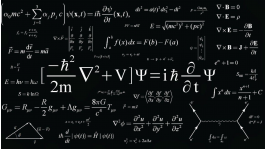Large–scale privatization, a crucial effect of the economic transformations in Russia, is seeing the gradual emergence of a two–tiered economy consisting of a state and nonstate sector. What tendencies and laws govern their development? The answer to this will give an idea of the role of the state sector in the running of the economic system and single out the main problems and prospects arising from its evolution. These are the aspects at the heart of our examination.
Defining the main notions
At present, the concept of the state sector of the economy does not conform to existing statistical accounting [1]. We have not yet succeeded in dividing Russian enterprises into two relevant groups. Let us, therefore, deliberately simplify and assume that the state sector consists of state and municipal enterprises. Accordingly, all the other types of economic structures refer to the second sector of the economy (this principle is followed by the Statistics Committee of the Russian Federation). The results of this segregation of main economic indicators are given in Table 1.
Table 1. Percentage of the state sector in industry
|
Indicator |
1994 |
1995 |
|
Percentage of total enterprises |
8.9 |
7.7 |
|
Percentage of total production |
21.5 |
11.0 |
|
Percentage of total employed |
27.7 |
18.6 |
|
Integral indicator |
19.4 |
12.4 |
Further on, we should bear in mind that the evaluations of the scale of the state sector obtained in this way are somewhat minimized because the category of industrial enterprises of a mixed property form includes structures more than half of whose capital is concentrated in the hands of the state, for which reason, in actual fact, they could well be referred to the state sector [1].
Even though practically faultless in a strictly legal sense, this definition is not entirely so in the economic sense. The controlling block of shares that enables the state to determine how the enterprise should be run is as a rule modest. It is small wonder that in different countries the state sector is defined in various ways, encompassing enterprises with between 25 and 35% of state ownership. In many ways, these figures depend on particular industrial or regional features. In some industries, the capital stock is so strongly dispersed that the controlling block of shares amounts to a mere 5 to 10%. As for the “legal” standard in Russia, it provides for more than 50%.
In line with the present–day realities, the state sector should encompass Unitarian state enterprises and organizations; Unitarian municipal enterprises and organizations; institutions, including bodies of executive power at all levels; and enterprises and organizations with a mixed form of property of which more than 50% belongs to the state.
Curiously, we still have no entrenched and economically rigid concept of the three types of economic structure that form the country’s economy–enterprise, organization, and institution. As a rule, the essential difference between them is not visible in norm–governing documents. Yet, terminological rigidity is absolutely necessary if we want to correctly single out the state sector from the general mass of economic structures.
An enterprise is a legal entity participating in market exchanges and doing business essentially in the sphere of material production (production of goods).
An organization is a legal entity participating in market exchanges and doing business mainly in the nonproductive sphere (production of services).
An institution is a legal entity instituted by the state or its local representatives not participating in market exchanges and occupied with control and administrative functions.
Looking at things from a somewhat different angle, we may say that all the property of the Russian Federation consists of public and capitalized property. By public property we mean the property of the two sectors belonging to the state. This consists of state property, including federal property and the property of subjects of the federation; municipal property; and part of the property of legal persons with a mixed property form proportionate to the share of the state in their activity.
Thus, we can characterize a number of other important economic categories. The income of the state sector, for example, is the income the state receives from productive or other activity of the legal entities of the respective sector. The income of public property is the income from its exploitation and also that received out of the share it has in the activity of legal entities with a mixed form of property.
It is clear from the aforesaid that the scale of the state sector is accounted for both in absolute and in relative units (share in the national economy). But this magnitude is in principle ambiguous because it can be evaluated by means of different indicators reflecting the functioning of the relevant legal entities (their percentage, share of employed, share of manufactured production, and so on). The scale of public property is also calculated both in absolute units (value in current prices) and in relative units (share in the national economy). But its magnitude is usually a wholly definite economic indicator and does not presuppose alternative quantitative evaluations.
The introduction of the concepts of state sector of the economy and public property are necessary for two reasons.
First, at present, there is a countless number of “abandoned,” practically unprofitable, idle enterprises with an unclear status. Accordingly, it is unclear who must pull these economic structures out of their difficult straits and whether or not the state must concern itself with their fate.
Second, even though management of state property is highly restricted, it can be fairly effective. It calls for an appropriate production and investment strategy of legal persons, including definition of the volume and range of produced commodities and services; social and commercial policy; wages and salaries, including import and export activity; and policy related to tax rebates, credits, subsidies, and the like.
General description of the state sector
Table 1 shows that the percentage of the state sector in industry fluctuates strongly depending on particular parameters. To obtain a unified evaluation of its scale, let us fall back on an integral indicator representing an arithmetic mean of three quotients. This “mean” approach is in general use, although it differs somewhat from the method used abroad: we use the indicator of total legal entities of the state sector instead of the indicator of capital assets and resources. We do so because of our lack of basic information, but the solution is even more attractive to us because it takes into account three functionally different particular indicators instead of two resource indicators and one indicator of results.
Already in 1994, the participation of the state sector in industry had become insignificant, and a year later it shrank another 7%. This simply fantastic speed of “shedding” state plants was absolutely unnecessary and in fact groundless. Let us take a closer look at the changes it caused.
Judging from Table 2, labor productivity in the state sector is considerably lower than in the private sector; what is more, the gap is tending to widen. In 1994, for example, the correlation was 1 : 4, and in 1995 it was 1:8. This rise was due less to the growth of relative productivity on private enterprises than to the decline of productivity in the development of state production enterprises.
Table 2. Relative summary indicators of industrial enterprises, percent
|
Type of enterprise (form of property) |
Relative labor efficiency |
Relative size of enterprise |
||
|
1994 |
1995 |
1994 |
1995 |
|
|
State sector |
77.6 |
59.1 |
311.2 |
241.6 |
|
Nonstate sector |
108.6 |
109.3 |
79.4 |
88.2 |
As for the size of enterprises as determined by the workforce, the concentration of resources at state enterprises is considerably higher. This is natural; many of them were originally built as industrial giants that private structures find either difficult or entirely impossible to finance. But here we see an obvious balancing out of scale indicators through the simultaneous action of two forces acting in different directions: expansion of nonstate enterprises and splintering of state enterprises. In 1994, the latter exceeded the size of structures of the alternative sector nearly 300%; in 1995, the correlation shrank to 170%.
A comparison of indicators of the relative size of enterprises shows a striking regularity. The larger they are, the less effectively they use resources. This conclusion is contrary to the prevailing opinion about the economics of production magnitudes; in any case, it is unjustifiable when comparing such diverse economic structures as state and nonstate enterprises.
Now, let us turn to a more detailed classification of industrial structures by forms of property (Table 3). The most advanced form of property as concerns efficiency is the mixed (stock–holding) form, in which enterprises with a share of foreign capital distinguish themselves.
Table 3. Relative indicators of industrial enterprises by property forms, percent
|
Form of property |
Relative labor efficiency |
Relative size of enterprises |
||
|
1994 |
1995 |
1994 |
1995 |
|
|
State |
77.4 |
58.1 |
389.4 |
340.8 |
|
Municipal |
80.0 |
68.4 |
86.9 |
67.9 |
|
Associated property |
33.3 |
33.3 |
66.7 |
66.7 |
|
Private |
66.4 |
70.0 |
31.3 |
37.3 |
|
Mixed, no foreign involvement |
126.6 |
127.9 |
291.5 |
309.5 |
|
Mixed, joint ventures with foreign involvement |
240.0 |
200.0 |
62.5 |
68.2 |
This leads to the conclusion that one of the main results of the transformation period in Russia is that foreign capital in the assets of enterprises is accompanied by a steep rise of production efficiency. Consequently, in the initial stages of institutional change, foreign capital serves as a catalyst of the country’s overall production efficiency.
Unexpectedly, in 1994, private structures were second to last for labor productivity among the six types of enterprises–even inferior to state and municipal enterprises. This means that the condition of the state sector was then still relatively sound, and its rapid en masse privatization can hardly be regarded as justified. Additionally, the private sector was obviously floundering on the new economic markets, and it was a serious mistake to give it strategic priority in those circumstances. In the years that followed, however, the weight of state enterprises kept dropping all down the line, while that of private ones increased. This led to a reshuffling of the system of levels of efficiency. By 1995, private firms climbed from fifth to third place, while state and municipal structures suffered a kind of “efficiency crisis” which was, on one hand, largely precipitated by institutional changes in the economy, and, on the other, discredited the state sector and stimulated its further disintegration. Thus, the dynamics of the breakdown of the state sector of the economy was of a reflexive nature. According to George Soros, this process is self- sustaining and will fade away as economic agents suit their views of the state sector with the actual results of its activity [2].
Table 3 shows that most giant enterprises are state or Russian-owned mixed property. The fact that in 1995 the difference between the size of enterprises of these two segments was minimal leads to the following far–reaching conclusion: Russia has accumulated its own stock capital that can maintain industrial structures comparable in size to state–owned enterprises. In fact, by 1995, Russia already had an enduring financial foundation for shaping giant private national corporations. Curiously, no connection is observed between the size of enterprises and the productivity of labor. Here, all effects are connected exclusively with the internal principles on which production is organized. Russian stock companies succeed in securing good results through substantial mobilization of the workforce, having learned to economize correctly on the scale of production; joint ventures get good results within the framework of compact economic structures. Besides, joint stock companies with foreign participation lose no opportunity to buttress their position on the market by attracting labor resources. In 1995, this enabled them to occupy third place in the appropriate ranking.
Industries in the state sector
To get a better idea of the scale of the institutional changes in the country, let us produce an integral indicator of the share of the state sector in the subdivisions of industry (Table 4). As we can see, the rate of its “evaporation” is fairly high. The most public sectors are those of power engineering, coal, and mechanical engineering. These fields are creating the biggest problems for the country mainly because of their capital–intensity. Private capital is not yet able to pull them out of the hole, especially considering their low rate of profit and the undeveloped sales market. Note in this context that the indicator we are calculating of the share of the state sector in industry fulfils yet another indicative function, helping to pinpoint distressed production zones. The initial selection principle is obvious; a high share of the state sector in a specific field is an indirect sign that it is in serious trouble. The hard to settle problems lead to the flight of private capital, causing growth of the percentage of state forms of property.
Table 4. Integral indicator of the scale of the state sector by industries, percent
|
Industries |
1994 |
1995 |
|
Power engineering |
35.4 |
26.3 |
|
Fuels industry |
24.6 |
10.1 |
|
oil |
10.8 |
3.6 |
|
oil processing |
5.2 |
1.3 |
|
gas |
26.5 |
1.0 |
|
coal |
42.8 |
19.7 |
|
Iron and steel |
3.4 |
1.3 |
|
Nonferrous metals |
17.0 |
6.8 |
|
Chemicals and petrochemicals |
15.7 |
10.8 |
|
Mechanical engineering and metalworking |
23.8 |
16.2 |
|
Timber, woodworking, pulp and paper |
16.9 |
10.3 |
|
Building materials |
19.2 |
13.3 |
|
Light industry |
13.8 |
8.7 |
|
Food industry |
16.6 |
9.6 |
Another cluster includes building materials, chemicals, petrochemicals, timber, woodworking, pulp and paper, the light and food industries, and nonferrous metals. In these fields, too, participation of the state is still fairly conspicuous.
The third group includes oil, oil–processing, and gas, as well as ferrous metallurgy. Here, privatization has reached the maximum, and the state’s participation is already practically unnoticeable. It was, indeed, in these fields, that the state rapidly cast off all production capacities. A truly fantastic rate of privatization was observed in the gas industry, where the state sector vanished almost completely in no more than a year. This precipitous “takeover” of state enterprises has no precedent in world practice.
Note, too, the specific irregularity of the industry by industry restructuring of the economy’s state segment. The fuels industry, for example, broke up into oil, oil processing, and gas, which were intensively privatized, while private capital showed practically no interest in the coal industry. In effect, this state of affairs was directly due to the irregular development of the country’s fuels complex.
Some aspects of industrial privatization draw our special attention, because they do not conform to elementary economic logic. The oil, oil processing, and gas industries, for example, were swiftly consumed by the private sector, while there was a long period of irresolution around the light and food industries, although, at first glance, they could have been easily privatized and were well adapted to the rapid input of small private capital. The large fuel complex, on the other hand, called for considerable capital and current financial investments. The reason for this lies in the high foreign–exchange effectiveness of fuels and the low competitiveness of our light and food industries on the world market. Besides, in the new conditions, the mania for giant food and textile enterprises suffered complete technological defeat. The many years of constructing oversize plants has had the result that the food and textile enterprises of today are clumsy, nearly completely immobile, and equipped with obsolete machinery. The tendency of splitting up the inefficient giants is still very far from complete. It is not surprising, therefore, that in the circumstances, Russian entrepreneurs turned their backs on these industries.
The aforesaid leads up to two more highly important conclusions. First, the privatization campaign followed a most irrational scenario. Instead of selling industrial enterprises that were burdensome for the state, the “golden” enterprises capable of producing exportable products and yielding considerable profit were the first to be sold. Second, the behavior of the rising class of homebred entrepreneurs is by nature chiefly of a parasitical nature. Until recently, their function chiefly amounted to a passive pumping of foreign exchange out of the fuel industries. Active investment programs, technological renewal, and the introduction of fundamentally new management principles are rare and far between.
Formally, privatization of a production plant may be carried out in a very short time. But the main question is whether the formerly state–owned enterprises function better in their new capacity. The answer to this is partly contained in Table 5.
Table 5. Correlation of labor efficiency of nonstate and state sectors by industries, percent
|
Industries |
1994 |
1995 |
|
Power engineering |
111.1 |
178.7 |
|
Fuels industry |
309.0 |
205.4 |
|
oil |
227.0 |
259.1 |
|
oil processing |
92.9 |
908.1 |
|
gas |
178.7 |
807.1 |
|
coal |
107.1 |
77.7 |
|
Iron and steel |
283.5 |
167.0 |
|
Nonferrous metals |
100.0 |
160.6 |
|
Chemicals and petrochemicals |
167.2 |
186.0 |
|
Mechanical engineering and metalworking |
125.7 |
136.2 |
|
Timber, woodworking, pulp and paper |
138.0 |
144.9 |
|
Building materials |
74.8 |
71.7 |
|
Light industry |
109.0 |
121.9 |
|
Food industry |
106.8 |
117.1 |
As the process of denationalization grew deeper, the gap between the labor efficiency of the two sectors widened in practically all fields. The only exception is coal and building materials, where privatization yielded little or no benefits. This is especially surprising in view of the fantastic breakthrough in the oil processing and gas industries, where the private sector is fully triumphant, and the only questionable thing is the incredibly rapid pace of change.
There is one more interesting detail. In 1994, the state sector exceeded the private sector in labor efficiency in oil processing and building materials; in 1995, the same was true of building materials and coal. Thus, the mid–1990s saw active competition in efficiency between two segments of the country’s economy. And, on the whole, the private sector emerged victorious.
Privatization as a Factor of Greater Output and Higher Efficiency
Our calculations concerning the effect of forms of property on the dynamics of industrial output, average industrial labor efficiency, and the structural effect that is derived, on one hand, from the restructuring of employment by subdivisions of industry and, on the other, from changes of employment by forms of property (since these calculations are comprehensible to specialists only, they are omitted here) provide the following conclusion: the change of forms of property made a tremendous impact on the functioning of industry. Suffice it to say that, in 1994–1995, it accounted for 46% of total accretion of the industrial productivity of labor. In addition, the restructuring of industrial enterprises helped slow down the production decline. If the structure in 1995 had remained the same as in 1994, the industrial recession would have been twice as bad, and the drop would have been 5.4% instead of the actual 3%.
It follows that privatization has been one of the most powerful factors behind the growth of efficiency and has helped to hold down the crisis. It is quite safe to say that, in the absence of privatization, the industrial crisis would have culminated in a global paralysis of production.
The Scale of State Participation in the Economy
To get an idea of the true scale of the state’s participation in the country’s economic life, examine Table 6. Characteristically, the downgrade tendencies in state property (basic assets) and capital input go contrary to the dynamics of the share of state expenditures. The latter was more stable in time and grew or declined at different stages. In other words, the state gave ground quite easily as concerned “petrified” ineffective property and, on the contrary, tried in every possible way to retaining its place in current financial life.
Table 6. Indicators of the state share in the Russian economy, percent
|
Indicator |
1993 |
1994 |
1995 |
|
Share of state assets |
53 |
44 |
42 |
|
Share of state investments |
63 |
40 |
37 |
|
Share of state outlays in GDP |
34 |
38 |
29 |
|
Mean indicator |
50 |
41 |
36 |
It is noteworthy that the mean coefficient of the state’s participation in the economy was much higher than the integral share of the state sector. This means, above all, that the role of the state must on no account be identified with the specific gravity of the state sector, for this may mislead observers about the true scale of the state’s activity. Here we see the difference between state property (the indicator of its scale being the indicator of the share of the corresponding funds), the state outlays (their share in the GDP), and the state sector, whose scale is for its part determined by taking the mean of several indicators.
It became possible to reduce state budget outlays in many ways thanks to an active compression of the state sector of the economy. But the connection between these characteristics may vary. The recorded changes have above all strengthened the “budgetary saturation” of the sector in question, which, with all other factors being equal, helps to heighten its quality and competitiveness. It appears that this tendency will grow deeper and may become one of the crucial factors for making state enterprises sounder.
References
1. Rossiiskii statisticheskii ezhegodnik (A Russian Statistical Annual), Moscow: Logos, 1996.
2. Soros G. Alkhimiya finansov (The Alchemy of Finance), Moscow: Infra–M, 1996.
[1] This “broad” definition is used at present by the RF Ministry of the Economy (especially in its method recommendations).
Official link to the article:
Balatskii E.V. The State Sector of Russia’s Economy in the Transitional Period// «Herald of the Russian Academy of Sciences», Vol. 68, No. 3, 1998, pp. 188–192.









